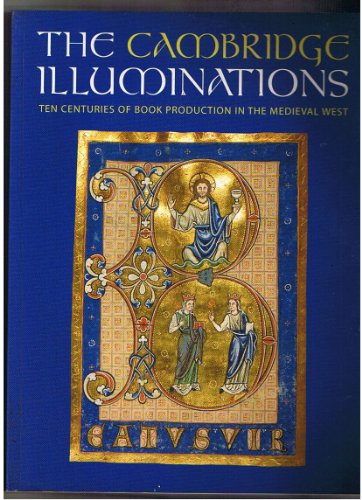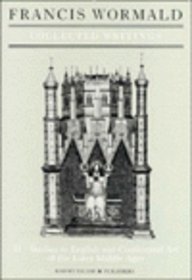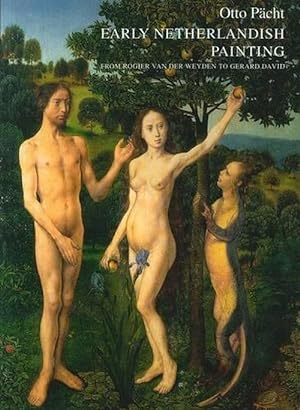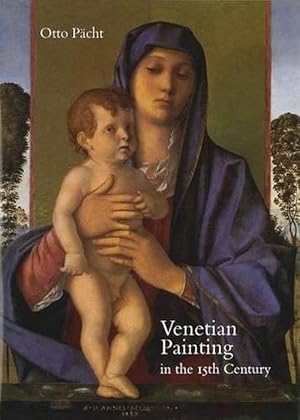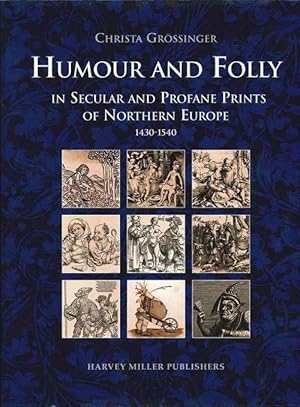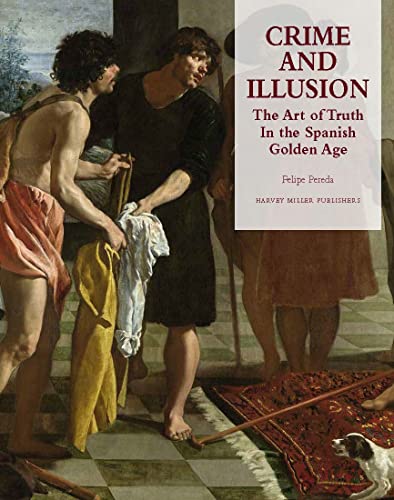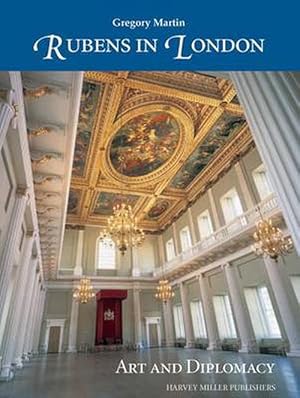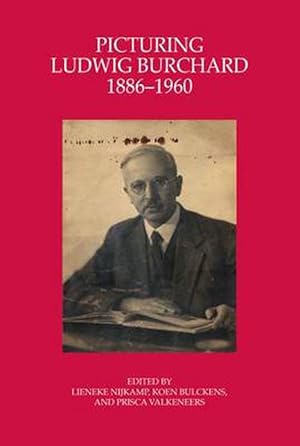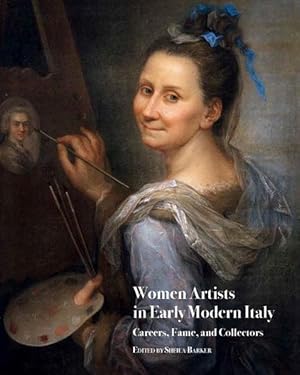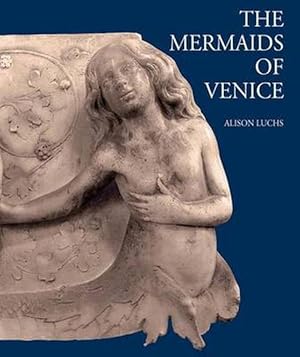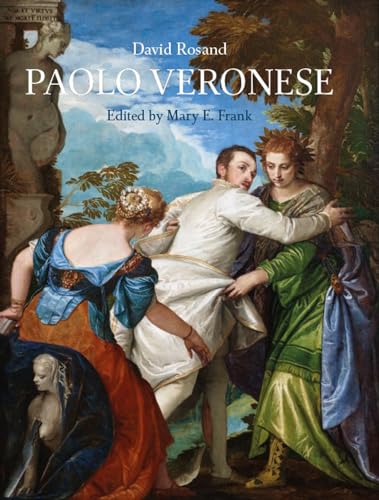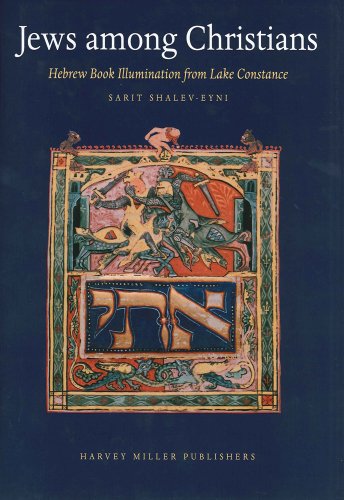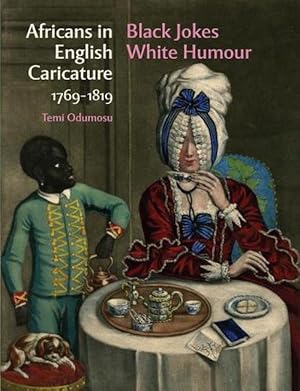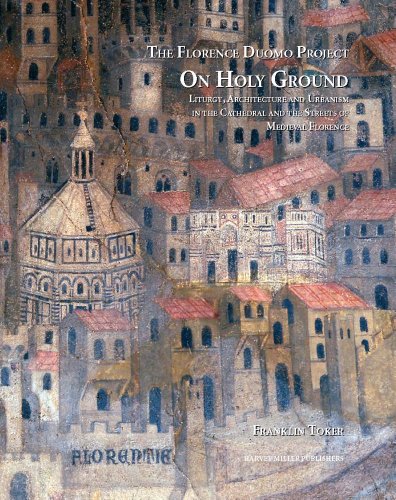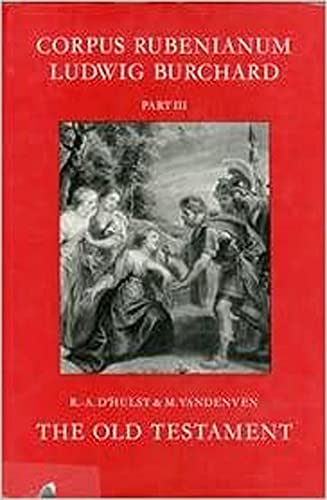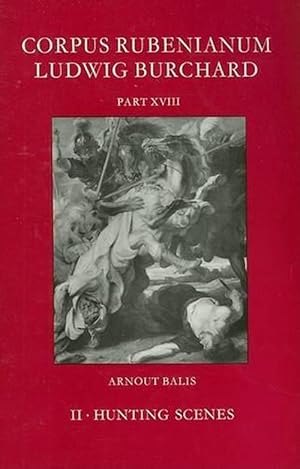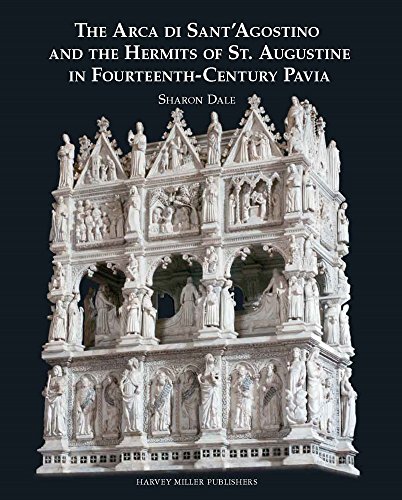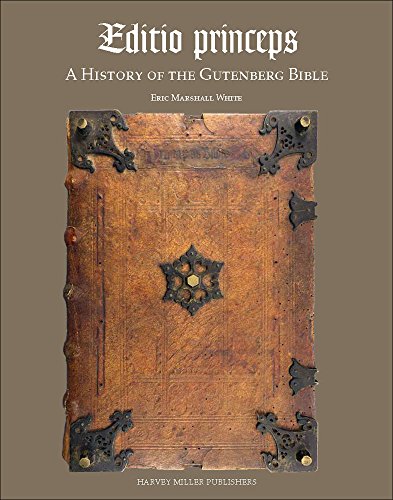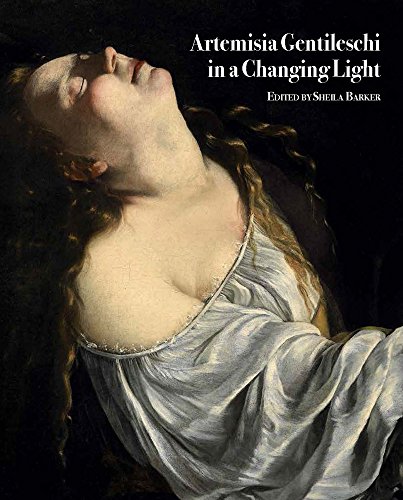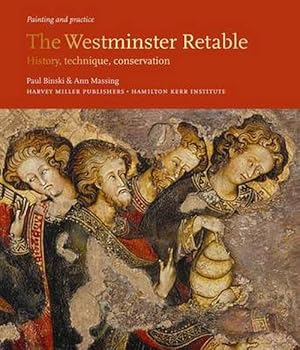brepols n v new york (59 Ergebnisse)
Produktart
- Alle Produktarten
- Bücher (59)
- Magazine & Zeitschriften
- Comics
- Noten
- Kunst, Grafik & Poster
- Fotografien
- Karten
-
Manuskripte &
Papierantiquitäten
Zustand
Einband
Weitere Eigenschaften
- Erstausgabe
- Signiert
- Schutzumschlag
- Angebotsfoto (20)
- Kein Print-on-Demand
Land des Verkäufers
Verkäuferbewertung
-
The Cambridge Illuminations: Ten Centuries of Book Production in the Medieval West
Verlag: Brepols N.V., Belgium, New York, 2005
ISBN 10: 187250163XISBN 13: 9781872501635
Anbieter: WorldofBooks, Goring-By-Sea, WS, Vereinigtes Königreich
Buch
Paperback. Zustand: Very Good. The book has been read, but is in excellent condition. Pages are intact and not marred by notes or highlighting. The spine remains undamaged.
-
Mk Taq Test 0426-01
Verlag: Brepols N.V., Belgium, New York, 2016
ISBN 10: 0000000140ISBN 13: 9780000000149
Anbieter: WorldofBooks, Goring-By-Sea, WS, Vereinigtes Königreich
Buch
Paperback. Zustand: Very Good. The book has been read, but is in excellent condition. Pages are intact and not marred by notes or highlighting. The spine remains undamaged.
-
Collected Writings (Paperback)
Verlag: Brepols N.V., New York, 1988
ISBN 10: 0905203585ISBN 13: 9780905203584
Anbieter: CitiRetail, Stevenage, Vereinigtes Königreich
Buch
Paperback. Zustand: new. Paperback. This series is designed to make accessible the insights, discoveries, and considered judgements in the field of medieval art of Francis Wormald (1904-72)--one of the great paleographers of our time. This second volume collects thirteen important and hard-to-find papers on such subjects as "Continental Influence on English Medieval Illumination," "The Fitzwarin Psalter," and "The Wilton Diptych." This volume contains 13 papers on the interaction of English and Continental medieval art, and the diversity and significance of Continental influences on the development of English style. Shipping may be from our UK warehouse or from our Australian or US warehouses, depending on stock availability.
-
Early Netherlandish Painting (Paperback)
Verlag: Brepols N.V., New York, 2010
ISBN 10: 1905375700ISBN 13: 9781905375707
Anbieter: CitiRetail, Stevenage, Vereinigtes Königreich
Buch
Paperback. Zustand: new. Paperback. Otto Pacht's studies of the Early Netherlandish painters are the fruit of a lifetime's research. Following his book on the brothers Van Eyck and their circle, this volume deals with the next generation of artists, the great figures of the 15th and early 16th century: Rogier van der Weyden, Petrus Christus, Aelbert van Ouwater, Dieric Bouts, Justus van Gent, Hugo van der Goes, Geertgen tot Sint Jans, Hans Memling and Gerard David. In the tradition of the Vienna School, Pacht's approach puts emphasis on formal analysis and on direct contact with the works of art themselves. Taking certain key works by each artist as examples, he discusses every facet of the work including style, mood, iconography, symbolism and construction of space. The chapters are linked by the theme of imitation and continuation: the author compares the same subject as treated by various artists and shows how artists adopted developed ideas and motifs first employed by their predecessors. Although his touchstone was the evidence of his eyes, Pacht was always responsive to the theories of other scholars, and this volume is a gateway to an influential period in the history of art. The proximity of the illustrations to the text enhances his account of the great figures of the period, and there is a folding plate, in colour, of Rogier van de Weyden's Last Judgement alterpiece for the chapel of the hospital, the Hotel-Dieu, in Beaume. Shipping may be from our UK warehouse or from our Australian or US warehouses, depending on stock availability.
Mehr Angebote von anderen Verkäufern bei AbeBooks
Neu ab EUR 69,79
-
Thinking Through Rubens (Hardcover)
Verlag: Brepols N.V., New York, 2023
ISBN 10: 1915487285ISBN 13: 9781915487285
Anbieter: Grand Eagle Retail, Wilmington, DE, USA
Buch
Hardcover. Zustand: new. Hardcover. Arnout Balis (1952-2021), one of the greatest Rubens authorities of his generation and beyond, stood for openness and inclusiveness in scholarship as in life. Exemplary in their originality, scope and intellectual rigour, his many outstanding publications, of which a selection spanning forty years of scholarship is presented here, constitute but a small part of what he contributed to the understanding of the art of Rubens and his contemporaries. Shipping may be from multiple locations in the US or from the UK, depending on stock availability.
Mehr Angebote von anderen Verkäufern bei AbeBooks
Neu ab EUR 137,56
-
Venetian Painting in the Fifteenth Century (Paperback)
Verlag: Brepols N.V., New York, 2005
ISBN 10: 1872501230ISBN 13: 9781872501239
Anbieter: CitiRetail, Stevenage, Vereinigtes Königreich
Buch
Paperback. Zustand: new. Paperback. Otto Pacht, one of the most significant art-historians of the 'Vienna School', and well known for his analyses of Early Netherlandish art, turns his attention in this publication to the humanist circle of Early Renaissance painters in Venice, dominated by Jacopo Bellini, his sons Gentile and Giovanni, and also his son-in-law Andrea Mantegna. It was a period of newly awakened interest in the Antique, of studies made directly from nature, and of trial and error in the technique of perspective. And in addition, a new awareness of the role of light and colour in the devotional and often monumental images of the Madonna, of altarpieces and of allegories contributed to the founding of what we now recognise as the hall-mark of Venetian painting, that culminated with Titian. Of the Bellini family, it has been Giovanni who was generally regarded as the major figure of the dynasty. Pacht, however, devotes particular attention to Jacopo's work, interpreting it as the basis for his sons' later development. He analyses Jacopo's London and Paris Sketchbook drawings, demonstrating where Late Gothic elements can be seen to be overtaken by the need to give perspective depth to the image, and how subsequent painting took account of these changes. This is also the essence of Pacht's examination of Mantegna's work, where the construction of space and depth is the key to our understanding of Mantegna's creative process.Turning to the next generation of the Bellini family, Pachts guides our eyes to appreciate the refinement and perception of Gentile's portraits, and finally takes us step by step through the works of Giovanni, where fantasy combines with the play of colour and light in creating compositions, devotional images, and landscape settings of perfect harmony and beauty. Otto Pacht, one of the most significant art-historians of the 'Vienna School' turns his attention in this publication to the humanist circle of Early Renaissance painters in Venice, dominated by Jacopa Bellini, his sons Genrile and Giovanni, and also his son-in-law Andrea Mantegna. It was a period of newly awakened interest in the Antique, of studies made directly from nature, and of trial and error in the technique of perspective. Of the Bellini family, it has bee Giovanni who is generally regarded as the major figure of the dynasty.Pacht, however, devotes particular attention of Jacopo's work, interpreting it as the basis for his sons' later development. He analyses Jacopo's London and Paris Sketchbook drawings, demonstrating where lts Gothic elements can be seen to be overtaken by the need to give perceptive depth to the image, how subsequent painting took account of these changes. This is also the essence of Pacht's examination of Mantegna's work, where the construction of space and depth is the key to our understanding of Mantegna's creative process. Turning to the next generation of Bellini family, Pacht guides us to appreciate the refinement and perception of Gentile's portraits, and finally takes us step by step through the works of Giovanni, where fantasy combines with the play of colour and light in creating compositions, devotional images, and landscape setting of perfect harmony and beauty. Shipping may be from our UK warehouse or from our Australian or US warehouses, depending on stock availability.
-
Humour and Folly in Secular and Profane Printes of Northern Europe, 1430-1540 (Hardcover)
Verlag: Brepols N.V., New York, 2002
ISBN 10: 1872501095ISBN 13: 9781872501093
Anbieter: CitiRetail, Stevenage, Vereinigtes Königreich
Buch
Hardcover. Zustand: new. Hardcover. This book highlights the importance of secular and profane prints for the reconstruction and understanding of themes popular in the late Middle Ages and early Renaissance, and examines their function as patterns for the other arts, and as sources for moral teaching and entertainment. As successors to the marginal illuminations of medieval manuscripts these prints represent the 'low' arts, and as such have licence for subversion and comedy. They are lower both in medium and subject matter than paintings, concentrating on foolish and sinful behaviour, on world-upside-down situations and on base human passions, all to be discussed as a mirror of human folly and depravity. Indeed, some images cross the barriers of decency, resulting in scatological and grotesque representations. The medieval Church was much exercised by the sin of lust, and women since the Fall were seen as temptresses incarnate, represented on prints as subjugating men, deceiving them and, generally, making fools of them. Peasants, equally lecherous but stupid are depicted carousing at Peasant Festivals, rather than working. Other popular themes are of Wild People, who live in harmony with nature, and protect the procreation of human families, and outcasts, such as beggars, cripples and quacks. Prints also illustrate the historical concerns of the period, such as the Peasants' War in Germany, and the wars in Italy, represented by images of vain soldiers and death. Overall, the picture gained from secular and profane prints is one of humanity abandoning itself to the sins of the flesh and, therefore, folly; real life is in details only, to serve in the interest of a satirical, yet convincing, illustration of the world, often with a didactic aim. This book highlights the importance of secular and profane prints for the reconstruction and understanding of themes popular in the late Middle Ages and early Renaissance, and examines their function as patterns for the other arts, and as sources for moral teaching and entertainment. As successors to the marginal illuminations of medieval manuscripts these prints represent the 'low' arts, and as such have license for subversion and comedy. They are lower both in medium and subject matter than paintings, concentrating on foolish and sinful behaviour, on world-upside-down situations and on base human passions, all to be discussed as a mirror of human folly and depravity. Indeed, some images cross the barriers of decency, resulting in scatological and grotesque representations. The medieval Church was much exercised by the sin of lust, and women since the Fall were seen as temptresses incarnate, represented on prints as subjugating men, deceiving them and, generally, making fools of them. Peasants, equally lecherous but stupid, are depicted carousing at Peasant Festivals, rather than working. Other popular themes are of Wild People, who live in harmony with nature, and protect the procreation of human families, and outcasts, such as beggars, cripples and quacks. Prints also illustrate the historical concerns of the period, such as the Peasants' War in Germany, and the wars in Italy, represented by images of vain soldiers and death. Overall, the picture gained from secular and profane prints is one of humanity abandoning itself to the sins of the flesh and, therefore, folly; real life is in details only, to serve in the interest of a satirical, yet convincing, illustration of the world,often with a didactic aim. Shipping may be from our UK warehouse or from our Australian or US warehouses, depending on stock availability.
-
Crime and Illusion (Hardcover)
Verlag: Brepols N.V., New York, 2019
ISBN 10: 1912554097ISBN 13: 9781912554096
Anbieter: CitiRetail, Stevenage, Vereinigtes Königreich
Buch
Hardcover. Zustand: new. Hardcover. According to an old historiographic tradition, the Spanish Golden Age placed the imitation of nature at the service of religion: its radical naturalism responded to the deep faith of that culture and moment. Crime & Illusion argues the opposite. It defends the thesis that the fundamental problem artists of the Golden Age confronted was not imitation but Truth. Moreover a large part, maybe the best part, of Spanish Baroque religious imagery is better understood as a complex exercise in addressing the spectators' doubts. Hovering on the horizon of an emerging empiricism, artists created their images as pieces of evidence, arguments for belief. Crime & Illusion reconstructs and interprets this judicial or forensic aspect of early modern visual culture at the center of a political, religious, and scientific triangle. Finally, the book explores the artists' skeptical reflection on the problematic relationship of painting and sculpture to the art of truth. Shipping may be from our UK warehouse or from our Australian or US warehouses, depending on stock availability.
Mehr Angebote von anderen Verkäufern bei AbeBooks
Neu ab EUR 120,33
-
Rubens in London (Hardcover)
Verlag: Brepols N.V., New York, 2011
ISBN 10: 1905375042ISBN 13: 9781905375042
Anbieter: CitiRetail, Stevenage, Vereinigtes Königreich
Buch
Hardcover. Zustand: new. Hardcover. The Flemish artist Peter Paul Rubens is probably the most important foreign artist to have worked in England. The story of how this came to be, of what he did when he was in England and what he painted for King Charles I is the story of this book. Charles and his father, the first Stuart monarchs of Great Britain, led and promoted a great wave of interest in the arts, in particular the visual arts, that culminated in Rubens painting nine large canvases to decorate the ceiling of Inigo Jones's Banqetting Hall, the ceremonial centre of the Court in Whitehall - a monument that is still intact today. It is this cycle, an hitherto unappreciated masterpiece of Baroque state art, that is the focus of this book. How Rubens came to obtain the commission is a tale of international politics and diplomacy in which the artist himself played a significant role. The author relates these complex political relationships and missions with great insight and clarity, and in doing so also describes the cultural and social setting in which Rubens found himself while in London. The illustrations that accompany the text include not only many of Rubens's own paintings and drawings made when he was in London, but also some of the now well-known works by the Italian and North European Renaissance masters that Rubens would have seen in the magnificent art collections of the King and the English aristocracy. Foremost however among the illustrations are the reproductions of the Banqueting Hall ceiling itself: these are mostly in colour, showing each of the three central scenes both complete and with striking details that would be difficult to see in the Hall itself. Also the corner oval painting as well as the long, celebratory, exuberant processions on either side are reproduced in colour and in detail, so that the reader, guided by the author's full descriptions and interpretations, can experience a unique viewing and understanding of Rubens's masterpiece. The Flemish artist Peter Paul Rubens is probably the most important foreign artist to have worked in England. The story of how this came to be, of what he did when he was in England and what he painted for King Charles I, is the story of this book. Charles and his father, the first Stuart monarchs of Great Britain, led and promoted a great wave of interest in the arts, in particular the visual arts, which culminated in Rubens painting nine large canvases to decorate the ceiling of Inigo Jones's Banqueting Hall, the ceremonial centre of the Court in Whitehall, a monument that is still intact today. Rubens's cycle is an unappreciated masterpiece of Baroque state art, and is the focus of the book. How Rubens came to obtain the commission is a tale of international politics and diplomacy in which the artist himself played a significant role; to realize the commission was one of the great challenges of his career. Shipping may be from our UK warehouse or from our Australian or US warehouses, depending on stock availability.
-
Statues and Busts (Hardcover)
Verlag: Brepols N.V., New York, 2023
ISBN 10: 1912554577ISBN 13: 9781912554577
Anbieter: Grand Eagle Retail, Wilmington, DE, USA
Buch
Hardcover. Zustand: new. Hardcover. This volume comprises 207 drawings, about half of which are in the Royal Library at Windsor Castle and the rest in the Department of Greece and Rome in the British Museum and numerous public or private collections in the UK and abroad. They depict a wide variety of ancient statues of gods and humans, standing, seated or supine, large and small, whole and fragmentary, mainly of marble but also of bronze, as well as statuettes in marble and alabaster, figurines in bronze and terracotta, both Roman and Etruscan, military trophy groups and phallic sculptures. Also represented are herms, a sizeable series of portrait busts and heads, miniature busts in semi-precious stones and figurative appliques. Some are wellknown pieces, from the Barberini, Giustiniani, Medici and Pamphilj collections in Rome, but many are unusual and otherwise unrecorded. The drawings were largely commissioned in the 1630s and 1640s from artists such as Pietro Testa and Vincenzo Leonardi, with smaller groups thereafter, the last in the mid-1680s. The assemblage was probably initially intended by Cassiano for publication as a series of prints for the benefit of antiquarian scholars and artists, complementing the larger quantity of drawings of bas-reliefs which Cassiano had begun to assemble from the early 1620s onwards (published in Part A.III) and constituting the core of the Paper Museum in Cassiano's narrower definition of it in 1654 as 'everything good in marbles and bronze which can provide some information about antiquity'. Shipping may be from multiple locations in the US or from the UK, depending on stock availability.
Mehr Angebote von anderen Verkäufern bei AbeBooks
Neu ab EUR 184,70
-
Picturing Ludwig Burchard, 1886-1960 (Paperback)
Verlag: Brepols N.V., New York, 2015
ISBN 10: 1909400203ISBN 13: 9781909400207
Anbieter: CitiRetail, Stevenage, Vereinigtes Königreich
Buch
Paperback. Zustand: new. Paperback. This book is the result of the international study day held on 6 December 2013 to celebrate the Rubenianum 50th anniversay. In 1963 a ship landed at the port of Antwerp carrying the specialized library and photo archive of the eminent Rubens scholar Ludwig Burchard. Ever since, the Rubenianum has been able to pride itself on this important legacy and to expand it in order to become the internationally renowned study centre for sixteenth- and seventeenth century Flemish art it is today. The proceedings aim to contextualize and to bring to light the man who stood at the beginning of the Rubenianum collection. What is his role within Rubens research? What characterizes the documentation he left us? How might he have operated when compared to his peers? Who was Ludwig Burchard? Proceedings of a conference held December 6, 2013 in Antwerp, marking the 50th anniversary of the Rubenianum. Shipping may be from our UK warehouse or from our Australian or US warehouses, depending on stock availability.
-
Drawing and the Senses (Hardcover)
Verlag: Brepols N.V., New York, 2017
ISBN 10: 1909400394ISBN 13: 9781909400399
Anbieter: CitiRetail, Stevenage, Vereinigtes Königreich
Buch
Hardcover. Zustand: new. Hardcover. Jusepe Ribera (1591-1652), Guercino (1591-1666), Stefano della Bella (1610-1664), Abraham Bloemaert (1566-1651), and Peter Paul Rubens (1577-1640) all created printed drawing lessons dedicated to the practice and theory of drawing. These artists composed wordless compositions on a page of eyes, ears, hands, mouths and noses, configurations that were ostensibly meant to teach the practice of drawing. Yet as this book argues, these were not only pedagogical treatises on practice but also theoretical works on draftsmanship made by the most influential European draftsmen. This book is the first theoretical consideration of these major works. Reading these treatises in the context of an early modern intellectual history of the senses, this book examines how artists visually theorized the process of producing knowledge through making lines on a page. Beginning with the pedagogical treatises of Albrecht Durer and progressing through the pedagogical writings, drawings, and printed drawing books of early-modern draftsmen, this book traces a history of the senses and drawing, demonstrating how shifting concepts of the body, divinity and god changed the processes by which artists conceived of drawing the world, themselves and others. Shipping may be from our UK warehouse or from our Australian or US warehouses, depending on stock availability.
Mehr Angebote von anderen Verkäufern bei AbeBooks
Neu ab EUR 149,21
-
Women Artists in Early Modern Italy (Hardcover)
Verlag: Brepols N.V., New York, 2017
ISBN 10: 1909400351ISBN 13: 9781909400351
Anbieter: CitiRetail, Stevenage, Vereinigtes Königreich
Buch
Hardcover. Zustand: new. Hardcover. In ten chapters spanning two centuries, this collection of essays examines the relationships between women artists and their publics, both in early modern Italy as well as across Europe. Drawing upon archival evidence, these essays afford abundant documentary evidence about the diverse strategies that women utilized in order to carry out artistic careers, from Sofonisba Anguissola's role as a lady-in-waiting at the court of Philip II of Spain, to Lucrezia Quistelli's avoidance of the Florentine market in favor of upholding the prestige of her family, to Costanza Francini's preference for the steady but humble work of candle painting for a Florentine confraternity. Their unusual life stories along with their outstanding talents brought fame to a number of women artists even in their own lifetimes - so much fame, in fact, that Giorgio Vasari included several women artists in his 1568 edition of artists' biographies. Notably, this visibility also subjected women artists to moral scrutiny, with consequences for their patronage opportunities. Because of their fame and their extraordinary (and often exemplary) lives, works made by women artists held a special allure for early generations of Italian collectors, including Grand Duke Cosimo III de' Medici, who made a point of collecting women's self-portraits. In the eighteenth century, British collectors wishing to model themselves after the Italian virtuosi exhibited an undeniable penchant for the Italian women artists of a bygone era, even though they largely ignored the contemporary women artists in their midst. Shipping may be from our UK warehouse or from our Australian or US warehouses, depending on stock availability.
Mehr Angebote von anderen Verkäufern bei AbeBooks
Neu ab EUR 182,30
-
The Mermaids of Venice (Hardcover)
Verlag: Brepols N.V., New York, 2010
ISBN 10: 190537545XISBN 13: 9781905375455
Anbieter: CitiRetail, Stevenage, Vereinigtes Königreich
Buch
Hardcover. Zustand: new. Hardcover. The arts of Renaissance Venice teem with sea monsters. Chief among these are mermaids and mermen--graceful hybrid beings human from the waist up, but with the lower body and tail of a fish, dolphin or sea serpent. Other sea hybrids--horses, bulls, panthers, even an elephant--also swim through Venetian art in finned and fish-tailed forms.Such creatures emerge from stone in the shadowy churches and the sunlit courtyard of the Palazzo Ducale, crown the wooden frame of a Giovanni Bellini altarpiece, and encircle the bronze flagpole bases in Piazza San Marco. Their gilded sugar apparitions graced banquet tables for illustrious visitors, and their descendents still glide through the canals in the form of brass seahorses set above the sides of gondolas This book focuses on the conceptions of artists who made marine hybrids as some of the most engaging inventions of the Renaissance in Venice and its subject city Padua. The chapters deal with five functional contexts: book decoration of the 1470s and 80s; tomb monuments of the 1480s and 90s; church decoration of the same years, particularly at Santa Maria dei Miracoli; centers of political activity, including civic settings in Venice and the palaces of powerful mainland employers of Venetian artists; and finally, private homes, where owners could hold small bronze sea hybrids in their hands, often as objects for use. A prologue introduces the heritage of monsters from the ancient and medieval worlds, the better to show how Venetian artists adapted these to new purposes. Exploring the ways in which artists could interpret and contemporary viewers might experience these wide-ranging sea-creatures, the book brings their best images together as a source of delight Shipping may be from our UK warehouse or from our Australian or US warehouses, depending on stock availability.
-
Andrea Mantegna (Hardcover)
Verlag: Brepols N.V., New York, 2020
ISBN 10: 1912554348ISBN 13: 9781912554348
Anbieter: CitiRetail, Stevenage, Vereinigtes Königreich
Buch
Hardcover. Zustand: new. Hardcover. If the fifteenth century in Italy has been seen as the moment when the constellation of disciplines known as the humanities begins to take shape, it was also a time when a crisis in the humanities - their value, their limits, who and what they included or excluded - was also manifest. A largely nineteenth century construction of Renaissance humanism has indelibly cast humanist pursuits in terms of writing, with arts of making or techne sometimes idealized as a second order manifestation of humanist ideas. This book re-examines the career of one socially and intellectually ambitious artist, Andrea Mantegna (1431-1506) and his intellectual network, to re-open questions of the locations of humanism, the notion of humanist art, or painting as a form of discourse that far from being ancillary to poetry, history, or rhetoric, served as a model for all three. It will be shown that the place of normativity or typicality that Andrea Mantegna occupies in the History of Art - Early Renaissance artist, artist as antiquarian, Albertian perspectivist, has kept from view the more radical potential of his work for a re-description of early Renaissance painting. The major works examined here - the Ovetari Chapel, the Camera Picta, the altarpieces for Padua and Verona, the Triumphs of Caesar, adopt strikingly original means to address their beholder, and to control and even produce their spatial and ideological milieu, challenging conventional notions of the gaze and how it operates in early Renaissance art. Furthermore, Mantegna's representations entail a striking integration of writing and painting as modes of transmission: Mantegna and his audience were highly attentive to the materiality of text, image, and object in the transmission of knowledge. Several of Mantegna works in which architecture or sculpture are depicted (such as The Introduction of the Cult of Cybele to Rome) seem preoccupied by the stability of meaning in the artistic object in circumstances of displacement or commodification. The Triumphs - a monumental series of canvases programmatically devoted to the bringing back of the riches of a lost world - offer a programmatic pictorial characterization of what we now call Renaissance art, engaging its stylistic desiderata, its technical accomplishments - and, in ways that exceed any theory committed to writing - its ideological implicatedness. Shipping may be from our UK warehouse or from our Australian or US warehouses, depending on stock availability.
-
Paolo Veronese (Hardcover)
Verlag: Brepols N.V., New York, 2023
ISBN 10: 190940098XISBN 13: 9781909400986
Anbieter: Grand Eagle Retail, Wilmington, DE, USA
Buch
Hardcover. Zustand: new. Hardcover. David Rosand's Paolo Veronese is a masterly account of the Venetian painter's artistic achievement, demonstrating a complete command of the literature and scholarly issues, insightful interpretations of individual paintings and drawings, and a marvelously elegant prose style. Rosand's reading of each painting judiciously considers how Veronese brought his pictorial intelligence to bear on the formal qualities of his work to create his own personal rhetoric of visual expression, one that embodies the "dignity and nobility of painting" and resonates with viewers and readers today. Rosand's arguments are not solely visual, however, but are buttressed by extensive quotations from scripture and textual sources. The author synthesizes decades of research and careful reflection, refining his own approaches, which have themselves stood the test of time. Careful readings of specific paintings, including the celebrated Wedding Feast at Cana, the frescoes at the Villa Barbaro, and the church of San Sebastiano, where Rosand played an integral part in the recent restoration by Save Venice Inc., are all accompanied by lavish illustrations, providing the reader the opportunity to put into practice the author's conviction that our own responses to paintings will guide their interpretation. Shipping may be from multiple locations in the US or from the UK, depending on stock availability.
Mehr Angebote von anderen Verkäufern bei AbeBooks
Neu ab EUR 239,53
-
Jews Among Christians (Hardcover)
Verlag: Brepols N.V., New York, 2010
ISBN 10: 1905375093ISBN 13: 9781905375097
Anbieter: CitiRetail, Stevenage, Vereinigtes Königreich
Buch
Hardcover. Zustand: new. Hardcover. Jews among Christians explores a corpus of illuminated Hebrew manuscripts of the Lake Constance region produced in the first decades of the fourteenth century. The author Sarit Shalev-Eyni, Professor at the Hebrew University of Jerusalem, provides a detailed and insightful study of the content, design, and iconography of the illustrations and decorations of a group of Ashkenahzi codices, thereby uncovering a surprising interface between Jews and Christians in the urban workshops of the time. Here, Christian artists would include midrashic components required by their Jewish instructor while drawing on the iconographic traditions of their Christian education, and artists of both religions were able to represent their own theological attitudes as well as profane tendencies and parody - in short, the various aspects of late medieval culture.A close comparison with the well-known Gradual of St. Katharinenthal, now in Zurich, and manuscripts such as the Schocken Bible, formerly in Jerusalem, and the Tripartite Mahzor -- originally bound as two volumes, but now split between Budapest, London and Oxford -- places the corpus firmly in the Lake Constance region and all but confirms the instructor to be one Hayyim, the scribe. The author's discussion of Hayyim's life and work and her historical overview of the relations between Jews and Christians in the final chapters of the book deepens our understanding of the religious and cultural dialogue between the two faiths not only in the production of this group of manuscripts but in the course of every-day life in the Middle Ages. This volume explores a corpus of illuminated Hebrew manuscripts of the Lake Constance region produced in the first decades of the 14th century. It provides a detailed and insightful study of the content, design, and iconography of the illustrations and decorations of a group of Ashkenahzi codices, thereby uncovering a surprising interface between Jews and Christians in the urban workshops of the time. A close comparison with other manuscripts places the corpus firmly in the Lake Constance region and all but confirms the instructor to be one Hayyim, the scribe. The author's historical overview of the relations between Jews and Christians deepens our understanding of the religious and cultural dialogue between the two faiths, not only in the production of this group of manuscripts but in the course of every-day life in the Middle Ages. Shipping may be from our UK warehouse or from our Australian or US warehouses, depending on stock availability.
-
Africans in English Caricature 1769-1819 (Hardcover)
Verlag: Brepols N.V., New York, 2017
ISBN 10: 1909400505ISBN 13: 9781909400504
Anbieter: CitiRetail, Stevenage, Vereinigtes Königreich
Buch
Hardcover. Zustand: new. Hardcover. Between 1769 and 1819 London experienced an unprecedented growth in the proliferation of texts and images in the popular sphere, engaging learned citizens in discussion and commentary on the most pressing social and political issues of the day. From the repeal of the Stamp Act to the French revolution, the local Westminster election or the abolition of the slave trade, these prints, political pamphlets, plays, novels and periodicals collaborated (sometimes intentionally) in critique, praise and assessment of the country's changing socio-economic climate. African people were a critical aspect of this world of images, and their presence conveyed much about the implications of travel, colonialism and slavery on the collective psyche. Whether encountered on the streets of the city, in opulent stately homes, or in tracts describing the horrors of the slave trade, the British paid attention to Africans (consciously or not), and developed a means of expressing the impact of these encounters through images. Scholarship has begun to interrogate the presence of Africans in British art of this period, but very little has been written about their place in visual and literary humour created in a metropolitan context. This book fills this scholarly lacuna, exploring how and why satirical artists both mocked and utilized these characters as subversive comic weaponry. Shipping may be from our UK warehouse or from our Australian or US warehouses, depending on stock availability.
Mehr Angebote von anderen Verkäufern bei AbeBooks
Neu ab EUR 199,15
-
The Cambridge Illuminations (Hardcover)
Verlag: Brepols N.V., New York, 2007
ISBN 10: 1905375174ISBN 13: 9781905375172
Anbieter: CitiRetail, Stevenage, Vereinigtes Königreich
Buch
Hardcover. Zustand: new. Hardcover. George Henderson, 'Introduction'; Andrea Worm, 'The Gospel Book in the Fitzwilliam Museum, MS McClean 21: Some New Aspects of the Artistic Relationship between the Meuse Valley, the Rhineland and Lower-Saxony'; Catherine Karkov, 'Evangelist Portraits and Book Production in Anglo-Saxon England'; Stella Panayotova, 'Tutorials with Slides for Thomas Becket'; Robert Scheller, 'Wreath and Crown in Apocalypse Illustrations'; Martine Meuwese, 'The Exploits of Alexander the Great in Trinity College'; Mary Rouse, 'Keeping Up Appearances: CUL Gg.4.6, Roman de la rose'; Richard Rouse, 'The Illuminator of Marie de St. Pol's Breviary'; Spike Bucklow, 'A Tale of Two Blues'; Kathleen Scott, 'Manuscripts for Henry VII in Cambridge'; T.A. Heslop, 'Manuscript Illumination at Worcester in 1055-1075'; William Schipper, 'Sacred Cross Word Puzzles: Trinity College, Cambridge, MS B.16.3'; Lawrence Nees, 'Between Carolingian and Romanesque in France: Cambridge Fitzwilliam Museum, MS McClean 19 and its Relatives'; Gennaro Toscano, 'Cristoforo Majorana e la miniature all'antica: a proposito di qualche codice conservato a Cambridge'; Jessica Berenbeim, 'English Fourteenth-Century Pastoral Manuscripts'; Judith Oliver, 'Te matrem laudamus: The Many Roles of Mary in Liege Psalter Hours in Cambridge'; Lilian Armstrong, 'Venetian Incunables in Cambridge Collections: Modes of Hand-Illumination'; Anne-Marie Legare, 'New Elements on the Oettingen Library: Fitzwilliam MS 22'; Michael Michael, 'Seeing in the Macclesfield Psalter and the Trinity Bede'; Margaret Manion, 'Blending Private and Liturgical Prayer: MS 3-1954 at the Fitzwilliam Museum and Valois Patronage'; Nicholas Rogers, 'From Eleanor of Castile to John Scott the Younger: Evidence for Illumination in Cambridge'; Patrick Zutshi, 'The Provenance of the so-called Hours of Isabella of Aragon'; Roger Wieck, 'The Primer of Claude de France and the Education of the Renaissance Child'; Lucy Sandler, 'The Macclesfield Psalter'; William Noel, 'W. de Brailes and the Illustration of the Psalter in Thirteenth-Century England'; Peter Jones, 'Cambridge University Library MS Gg.1.1: Fancy Horse or Pack-mule?'; Eberhard Konig, 'Angers Illumination in Cambridge (FM MSS 62, 39-1950)'; Alison Stones, 'Some Secular Manuscripts in Cambridge Collections' Contents: George Henderson, Introduction; Andrea Worm, The Gospel Book in the Fitzwilliam Museum, MS McClean 21: Some New Aspects of the Artistic Relationship between the Meuse Valley, the Rhineland and Lower-Saxony; Catherine Karkov, Evangelist Portraits and Book Production in Anglo-Saxon England; Stella Panayotova, Tutorials with Slides for Thomas Becket; Robert Scheller, Wreath and Crown in Apocalypse Illustrations; Martine Meuwese, The Exploits of Alexander the Great in Trinity College; Mary Rouse, Keeping Up Appearances: CUL Gg.4.6, Roman de la rose; Richard Rouse, The Illuminator of Marie de St. Pols Breviary; Spike Bucklow, A Tale of Two Blues; Kathleen Scott, Manuscripts for Henry VII in Cambridge; T.A. Heslop, Manuscript Illumination at Worcester in 1055-1075; William Schipper, Sacred Cross Word Puzzles: Trinity College, Cambridge, MS B.16.3; Lawrence Nees, Between Carolingian and Romanesque in France: Cambridge Fitzwilliam Museum, MS McClean 19 and its Relatives; Gennaro Toscano, Cristoforo Majorana e la miniature allantica: a proposito di qualche codice conservato a Cambridge; Jessica Berenbeim, English Fourteenth-Century Pastoral Manuscripts; Judith Oliver, Te matrem laudamus: The Many Roles of Mary in Lige Psalter Hours in Cambridge; Lilian Armstrong, Venetian Incunables in Cambridge Collections: Modes of Hand-Illumination; Anne-Marie Legar, New Elements on the Oettingen Library: Fitzwilliam MS 22; Michael Michael, Seeing in the Macclesfield Psalter and the Trinity Bede; Margaret Manion, Blending Private and Liturgical Prayer: MS 3-1954 at t Shipping may be from our UK warehouse or from our Australian or US warehouses, depending on stock availability.
-
On Holy Ground (Hardcover)
Verlag: Brepols N.V., New York, 2010
ISBN 10: 1905375514ISBN 13: 9781905375516
Anbieter: CitiRetail, Stevenage, Vereinigtes Königreich
Buch
Hardcover. Zustand: new. Hardcover. On Holy Ground: Liturgy, Architecture, and Urbanism in the Cathedral and in the Streets of Medieval Florence asks just one question: had the Florence Duomo never been excavated, what could we have known of the legendary cathedral of S. Reparata below it?The answer comes through the transcription of two key texts: one, never published until now, was written for the cathedral clergy around 1190; the other was composed around 1230, and printed just once, in the eighteenth century.English translations bring to life the liturgical year in medieval Florence, from the gorgeous pageantry of Christmas to the plaintive rites of Easter.The archaeological finds now make sense of the chapels, altars, and hallowed tombs that are cited in the texts. The volume then reconstructs the canonry (torn down around 1840), where the officiating priests lived, and the neighboring buildings on the cathedral square: a hospital, a school, and a prominent city gate that long ago disappeared, and a Baptistery, bishop's palace, and confraternity headquarters that are still standing. One chapter is devoted to the religious processions that ventured forth from S. Reparata to wind through the streets of Florence. Here the old texts are brought to life by the towers, bridges, churches, and monuments that survive from medieval Florence. The processional routes are examined for their social, political, and economic importance to the cathedral clergy, and the way the routes delineated the main lines of Roman Florence.The final chapter explores the food that poured onto the tables of the cathedral clergy from the farms and villages of the Florentine countryside.Altogether, the volume provides an exceptional look at the physical and spiritual impact of Florence's thousand-year-old cathedral in the age of Dante. Includes transcription of Ritus in ecclesia servandi. Shipping may be from our UK warehouse or from our Australian or US warehouses, depending on stock availability.
-
Rubens (Hardcover)
Verlag: Brepols N.V., New York, 2011
ISBN 10: 1905375867ISBN 13: 9781905375868
Anbieter: CitiRetail, Stevenage, Vereinigtes Königreich
Buch
Hardcover. Zustand: new. Hardcover. In 1622, Rubens designed his second tapestry series, The Story of Constantine, for which he executed twelve oil sketches, all of which are currently preserved in public and private collections in America and Europe. Tapestries produced after the lost cartoons, which were in turn painted after the oil sketches, were woven in the tapestry factories in the faubourgs of Saint Marcel and Saint Germain in Paris. Based on new archival research and a critical examination of the literature on the Constantine series, this book firmly embeds the genesis, and iconographical and stylistic features of the set in its specific artistic, manufactural, and commercial matrix, and thus develops the first truly inclusive approach to Rubens's Story of Constantine. Analysis of the entrepreneurial strategy of Marc Comans and Francois de la Planche, directors of the factory in the faubourg of Saint Marcel, the correspondence between Rubens and Peiresc, the provenance of the twelve oil sketches, and the iconographical programme reveals that the series was not commissioned by the French king Louis XIII, as has long been believed, but by Comans and de la Planche. A close reading of Rubens's primary literary source, Caesar Baronius's Annales Ecclesiastici, shows that the artist must have intended the twelve scenes to hang in a sequence different from the generally accepted one, though seventeenth-century buyers and viewers could have seen and interpreted the Constantine series quite differently, as their view was distorted by the jumble of Constantinian legends and motifs that had lodged in the cultural memory of Latin Christianity. Finally, the book explores the area of tension between the set's austere monumentality and highly sophisticated aesthetic, which was rooted in Rubens's profound knowledge of classical and Renaissance art and in his earlier forays into the free and creative application of these sources, contemporary French and Brussels tapestry sets, and the pictorial and decorative qualities, possibilities and challenges inherent in the medium itself. Shipping may be from our UK warehouse or from our Australian or US warehouses, depending on stock availability.
-
The Old Testament (Hardcover)
Verlag: Brepols N.V., New York, 1989
ISBN 10: 090520364XISBN 13: 9780905203645
Anbieter: CitiRetail, Stevenage, Vereinigtes Königreich
Buch
Hardcover. Zustand: new. Hardcover. This catalogue raisonne of the work of the Flemish painter Peter Paul Rubens is being published in 27 parts, some of which are in more than one volume. The Corpus is based on the material assembled over several decades by Ludwig Burchard. After his death in 1960, his material was handed over to the City of Antwerp to be published by the Belgian "National Centrum voor de Plastische Kunsten van de XVIde en de XVIIde Eeuw". The Centre's President, Professor R.A. d'Hulst, of Ghent University, is the General Editor of the Series. Each part is conceived as a separate volume dealing with a particular commission or group of subjects. This catalogue raisonne of the work of the Flemish painter Peter Paul Rubens is being published in 27 parts. The Corpus is based on the material assembled over several decades by Ludwig Burchard. Part 3 covers the Old Testament. Shipping may be from our UK warehouse or from our Australian or US warehouses, depending on stock availability.
-
Rubens (Hardcover)
Verlag: Brepols N.V., New York, 1986
ISBN 10: 0199210411ISBN 13: 9780199210411
Anbieter: CitiRetail, Stevenage, Vereinigtes Königreich
Buch
Hardcover. Zustand: new. Hardcover. Rubens painted some thirty hunting scenes throughout his career, many of which have not been studied extensively. This book catalogues and discusses all of Rubens' known hunting scenes, together with drawings, copies, and comparative material. Balis examines Rubens' source material as well as the influence of his hunting scenes on later Flemish painters. Rubens painted some thirty hunting scenes throughout his career, many of which have not been studied extensively. This book catalogues and discusses all of Rubens' known hunting scenes, together with drawings, copies, and comparative material. Balis examines Rubens' source material as well as the influence of his hunting scenes on later Flemish painters. Shipping may be from our UK warehouse or from our Australian or US warehouses, depending on stock availability.
-
The Arca Di Sant'Agostino and the Hermits of St. Augustine in Fourteenth-Century Pavia (Hardcover)
Verlag: Brepols N.V., New York, 2015
ISBN 10: 1909400017ISBN 13: 9781909400016
Anbieter: CitiRetail, Stevenage, Vereinigtes Königreich
Buch
Hardcover. Zustand: new. Hardcover. In 1327 Pope John XXII granted the Hermits of St. Augustine joint possession of San Pietro in Ciel d'Oro in Pavia, a church that until then had been for a century in the sole charge of the Canons Regular of St. Augustine. Both orders claimed a founding by St. Augustine himself, whose relics were somewhere in the church - although their precise location was unknown. The unprecedented division of the church and the ensuing conflict between the Hermits and the Canons were embedded in the larger struggle between the forces of universal church and regional state that engulfed the city of Pavia and ultimately much of Italy in the fourteenth century. Both city and church were contested repeatedly among the papacy, the empire, and the Visconti. This book is a study of the political negotiation between the papacy and the Visconti conducted by the Hermits at San Pietro in Ciel d'Oro in the Trecento - and a related examination of the Arca di Sant'Agostino, the patronage and iconography of which were deeply enmeshed in that larger historical context. At a basic level, the Arca promotes the Hermits' claims over those of the Canons Regular, creating a collective, institutional memory of the Hermits that identifies them as the true sons and heirs of Augustine by appropriating his writings, relics, and biography. However, the Arca is also a remarkable document of the Hermits' role in the complex political negotiations between the papacy and the Visconti. That the Arca di Sant'Agostino was paid for almost entirely by donations from Galeazzo II Visconti, his wife Blanche of Savoy, and their political allies is a circumstance that has never been examined. There is much in the iconography of the Arca that is relevant to the Visconti, such as the prominent depiction of the Virtues, recalling Giangaleazzo Visconti's title, The Count of Virtues. The iconography also includes the Quattro Santi Coronati, emblematic figures of papal temporal power. I link them to the Donation of Constantine, the forged document that served for centuries as the legal basis for papal temporal power. The promotion of papal plentitudo potestatis played a central role in Augustinian doctrine, explaining the Hermits' unusually close political affiliation with the papacy. Thus, the Arca iconography embraces three seemingly disparate agendas: the Hermits' own claims to St. Augustine, the celebration of Visconti authority in Lombardy, and the promotion of papal temporal power. Shipping may be from our UK warehouse or from our Australian or US warehouses, depending on stock availability.
-
Print Publishing in Sixteenth-Century Rome (Hardcover)
Verlag: Brepols N.V., New York, 2008
ISBN 10: 190537514XISBN 13: 9781905375141
Anbieter: CitiRetail, Stevenage, Vereinigtes Königreich
Buch
Hardcover. Zustand: new. Hardcover. This volume brings formal coherence to the overwhelming mass of prints published in sixteenth-century Rome. It is introductory in scope and does not attempt to include every print published by every publisher. The aim is to provide an overview of who was publishing what prints and when over the course of the sixteenth century. The five chapters provide an outline of the history of print publishing while the appendices serve to clarify chronologies and reveal groupings and patterns. A document central to this book deserves some comment. The record of the hearing into the murder of Gerolamo da Modena provided an opportunity to meet a number of the publishers, printers, and engravers at work in Rome in the decades after the mid-century and to understand better their lives, activities, and relationships. This volume brings formal coherence to the overwhelming mass of prints published in 16th-century Rome. It is introductory in scope and does not attempt to include every print published by every publisher. The aim is to provide an overview of who was publishing what prints and when over the course of the sixteenth cenrury. The five chapters provide an outline of the history of print publishing while the appendices serve to clarify chronologies and reveal groupings and patterns. Shipping may be from our UK warehouse or from our Australian or US warehouses, depending on stock availability.
-
The Palazzo Pamphilj in Piazza Navona (Hardcover)
Verlag: Brepols N.V., New York, 2008
ISBN 10: 1905375077ISBN 13: 9781905375073
Anbieter: CitiRetail, Stevenage, Vereinigtes Königreich
Buch
Hardcover. Zustand: new. Hardcover. The piazza Navona is one of the most celebrated urban spaces in Rome and perhaps Europe. Despite its lasting fame, neither the uninitiated nor the specialist has been fully privy to the history of its remarkable transformation from a medieval field to a magnificent Baroque piazza. The ambititions of a single family, The Pamphilj, engendered this remarkable change. Pope Innocent X (1644-55) sought to proclaim his family's identity through a building program, including the monumental palace, church of S. Agnese in Agone, Collegio Innocenziano, and Gianlorenzo Bernini's Fountain of the Four Rivers and Fountain of the Moor. The Pamphilj endowed the entire urban space with its indelible presence. Although the Palazzo Pamphilj was the catalyst for the single most important building program in mid-seventeenth-century Rome, its history has been largely neglected, and misconceptions have hindered an accurate understanding of the monument and its place in early modern architecture. Presenting a fundamentally revised history, this book argues in favor of a collaborative process of execution, in two distinct phases (1634-38, 1645-50), involving three architects (Francesco Peperelli, Girolamo Rainaldi, Francesco Borromini), two patrons (Innocent X and his sister-in-law Olimpia Maidalchini), and an architectural revisor (Virgilio Spada). The history of the palace is presented as inextricably linked to the social milieu of the early modern papal court and the development of piazza Navona and the city. From the vicissitudes of this story arise broader issues: building as identity, architecture and social ritual, artistic collaboration, women patrons, and collective memories of sites. Stephanie Leone teaches Art History at Boston College. Her primary field of research concerns seventeenth-century domestic architecture in Rome. The Piazza Navona is one of the most celebrated urban spaces in Rome and perhaps Europe. Despite its lasting fame, neither the uninitiated nor the specialist has fully been privy to the history of its remarkable transformation from a medieval field to a magnificent Baroque piazza. The ambitions of a single family, The Pamphilj, engendered this remarkable change. Pope Innocent X (1644-55) sought to proclaim his family's identity through a building program, including the monumental palace, church of S. Agnese in Agone, Collegio Innocenziano, and Gianlorenzo Bernini's Fountain of the Four Rivers and Fountain of the Moor. The Pamphilj endowed the entire urban space with its indelible presence. Shipping may be from our UK warehouse or from our Australian or US warehouses, depending on stock availability.
Mehr Angebote von anderen Verkäufern bei AbeBooks
Neu ab EUR 229,23
-
Rubens (Hardcover)
Verlag: Brepols N.V., New York, 1984
ISBN 10: 0199210322ISBN 13: 9780199210329
Anbieter: CitiRetail, Stevenage, Vereinigtes Königreich
Buch
Hardcover. Zustand: new. Hardcover. This volume catalogues and discusses all the known representations by Rubens of the Life of Christ after the Passion. It includes the little-known group of paintings and drawings of Christ Triumphant over Sin and Death, as well as the various depictions of the Conversion of Saint Paul, the Assumption and Coronation of the Virgin, the Last Judgement, the Fall of the Damned and the Assumption of the Blessed. They range from small panels to the largest works Rubens ever painted and count amongst the most popular and influential of his compostions. In his catalogue Dr. Freedberg presents a considerable amount of new evidence relating to their evolution and patronage, while separate sections are devoted to particularly important and unusual aspects of their iconography. Shipping may be from our UK warehouse or from our Australian or US warehouses, depending on stock availability.
-
Editio Princeps (Hardcover)
Verlag: Brepols N.V., New York, 2017
ISBN 10: 190940084XISBN 13: 9781909400849
Anbieter: CitiRetail, Stevenage, Vereinigtes Königreich
Buch
Hardcover. Zustand: new. Hardcover. The Gutenberg Bible is widely recognized as Europe's first printed book, a book that forever changed the world. However, despite its initial impact, fame was fleeting: for the better part of three centuries the Bible was virtually forgotten; only after two centuries of tenacious and contentious scholarship did it attain its iconic status as a monument of human invention. Editio princeps: A History of the Gutenberg Bible is the first book to tell the whole story of Europe's first printed edition, describing its creation at Mainz circa 1455, its impact on fifteenth-century life and religion, its fall into oblivion during the sixteenth and seventeenth centuries, and its rediscovery and rise to worldwide fame during the centuries thereafter. This comprehensive study examines the forty-nine surviving Gutenberg Bibles, and fragments of at least fourteen others, in the chronological order in which they came to light. Combining close analysis of material clues within the Bibles themselves with fresh documentary discoveries, the book reconstructs the history of each copy in unprecedented depth, from its earliest known context through every change of ownership up to the present day. Along the way it introduces the colorful cast of proud possessors, crafty booksellers, observant travelers, and scholarly librarians who shaped our understanding of Europe's first printed book. Bringing the 'biographies' of all the Gutenberg Bibles together for the first time, this richly illustrated study contextualizes both the historic cultural impact of the editio princeps and its transformation into a world treasure. Shipping may be from our UK warehouse or from our Australian or US warehouses, depending on stock availability.
-
Artemisia Gentileschi in a Changing Light (Hardcover)
Verlag: Brepols N.V., New York, 2018
ISBN 10: 1909400890ISBN 13: 9781909400894
Anbieter: CitiRetail, Stevenage, Vereinigtes Königreich
Buch
Hardcover. Zustand: new. Hardcover. Raised to the status of an international luminary by her contemporaries and now revered as one of the defining talents of the seventeenth century, Artemisia Gentileschi poses urgent questions for today's scholars. The recent outpouring of new attributions and archival discoveries has profoundly enriched our knowledge of the artist, but it has also complicated, and sometimes contradicted, the former storyline. If she was illiterate and unschooled, how did she befriend Galileo and court playwright Jacopo Cicognini? If she could not pay her bills, why did she continue to spend lavishly? How can we define her authorship if we admit workshop productions to her oeuvre? In these essays, an international cast of scholars and experts grapples with these problems, opening new paths of inquiry and laying bare their methodologies in fields as diverse as laboratory analysis, archival research, cultural history, literary analysis, and feminist art history. Among these approaches, connoisseurship takes center stage. By reconstructing the chronology and rationale of Artemisia's artistic iter, connoisseurship reveals the richness of her visual dialogues, including those with prominent contemporaries such as Caravaggio, Annibale Carracci, Vouet, Cristofano Allori, and Stanzione; with past artistic giants like Donatello and Michelangelo; and with the various hands who passed through her workshop as collaborators and assistants. These essays infuse our understanding of Artemisia with complexity and nuance, yet they also trace her characteristic mix of intelligence and verve in her art, her correspondence, and her deft social maneuvering, running like a thread through all stages of her life. Shipping may be from our UK warehouse or from our Australian or US warehouses, depending on stock availability.
-
The Westminster Retable (Hardcover)
Verlag: Brepols N.V., New York, 2010
ISBN 10: 190537528XISBN 13: 9781905375288
Anbieter: CitiRetail, Stevenage, Vereinigtes Königreich
Buch
Hardcover. Zustand: new. Hardcover. The late 13th-century Westminster Retable is rightly celebrated as one of the most beautiful and enigmatic panel paintings to have survived from medieval Europe. Its history is not without tragedy. It was made in the Westminster Abbey, one of the most prestigious Gothic churches of the thirteenth century, itself a treasure-house of medieval wall and panel painting; then, after the Dissolution of the Monasteries, it was demoted rapidly to use as part of a large cupboard; its ruination in the eighteenth century just pre-dated the Gothic Revival and its rediscovery and rescue. Since then, it has intrigued commentators because of its extraordinary technical mastery, its value as an ornamental resource for study and, more recently, as an important if fragmentary link in the history of painting in England and France in the thirteenth century. There is every reason to believe that its standing as an artwork was apparent even in the Middle Ages, and that, in short, it may be seen as one of the central monuments of Anglo-French Gothic painting. The Westminster Retable was conserved at the Hamilton Kerr Institute, University of Cambridge. Shipping may be from our UK warehouse or from our Australian or US warehouses, depending on stock availability.


